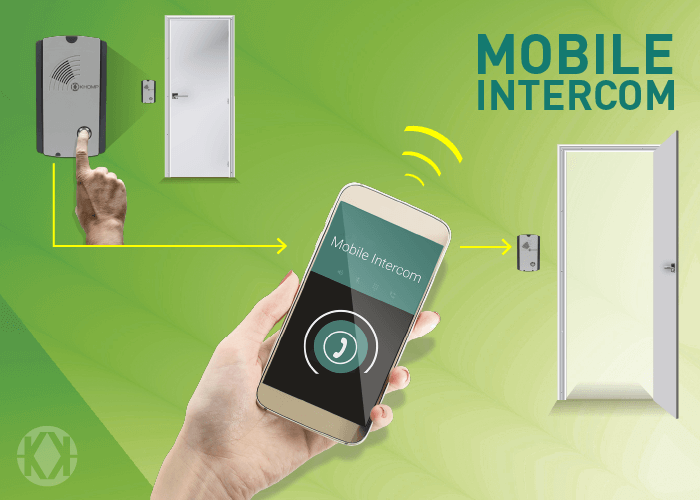Used by more than five billion people in the world, GSM-based communication is commonly associated with cell phones. Those who are skilled in this technology, however, know its versatility: at Khomp, for example, it is used in the Endpoints family, such as in the electronic intercom Mobile Intercom 101.
How does an intercom with GSM work?
A GSM network comprises entities with specific functions and interfaces: such as the user terminal – or mobile station, comprising a SIM Card, which allows for identification of the user in a unique way; and the mobile terminal, which is commonly a cell phone.
For Mobile Intercom 101, the SIM Card is responsible for the communication between the electronic intercom and the smartphone. Thus, when the intercom is activated, a call is made to the user’s mobile station (smartphone), who has been previously registered through the Khomp Mobile Intercom app, available for Android and iOS smartphones.
It is worth remembering that, since the SIM Card works as an unique identifier, Mobile Intercom 101 can only originate and receive calls through a single number.
Allow pre-determined temporary access
In the Mobile Intercom app, it is possible to allow temporary access for up to 20 guest numbers. To do this, the device administrator generates a password which is sent to guests through the app. Each guest must then call the number of the SIM card installed on the Mobile Intercom 101 and enter the password they received.
The advantage is that there is no need to worry about blocking these accesses, since the period of time during which that guest can enter is pre-determined. This way you can take advantage of the GSM technology to organize an event or allow access to service providers with a scheduled place, date, and time.
Can you imagine yourself in the middle of your party, with loud music and conversation and nobody hearing the intercom? That’s right! Mobile Intercom 101 will also solve this issue for you!
Sending messages
SMS text messages are Mobile Intercom’s way of communication with the owner and their guests, when pre-registered.
The “torpedo”, as it was known, has been regaining importance, thanks to the many mobile carrier plans that provide the service at zero cost. Thus, the SMS became very popular for companies to use it for advertisement purposes, as well as a security tool (e.g. “two-step verification”), as for Mobile Intercom 101.
Since the door can be controlled remotely, it may occur that, by carelessness of the guest, the door is unduly left open. If the door remains open for a period longer than the timeout set in the app by the administrator, an SMS is sent as an alert.
In this sense, the SMS is unbeatable: it does not depend on availability of wifi, 3G or 4G networks: delivery occurs in a few seconds and, worst case scenario, it won’t take more than one minute, according to a resolution from Anatel.
This is the second of a series of 4 posts in which you can find out everything about Khomp’s cellular intercom. The first one can be found here. Do you want to know more now? Access the product hotsite here.
References:
*Unique mobile subscribers provided by GSM Association: https://www.gsmaintelligence.com/
* Anatel Resolutions available at http://www.anatel.gov.br/legislacao/resolucoes
